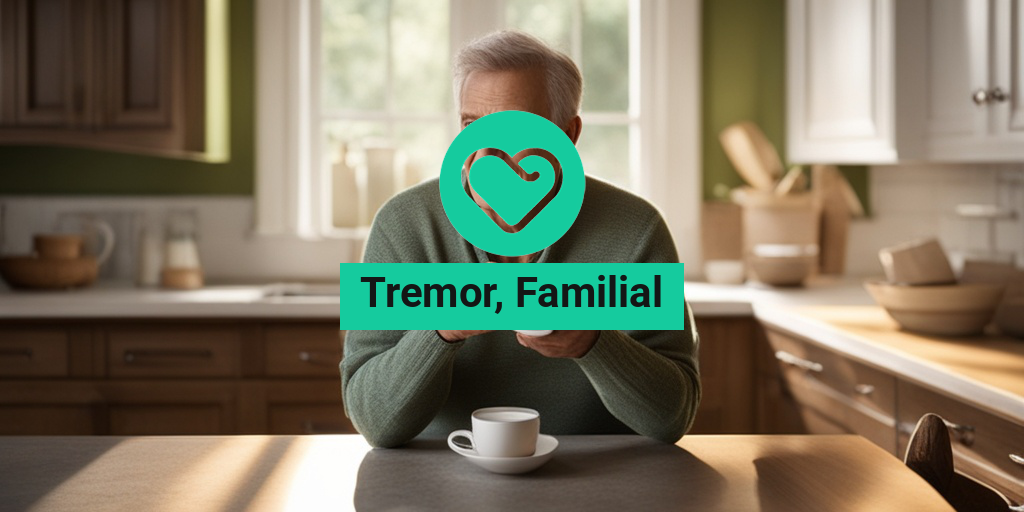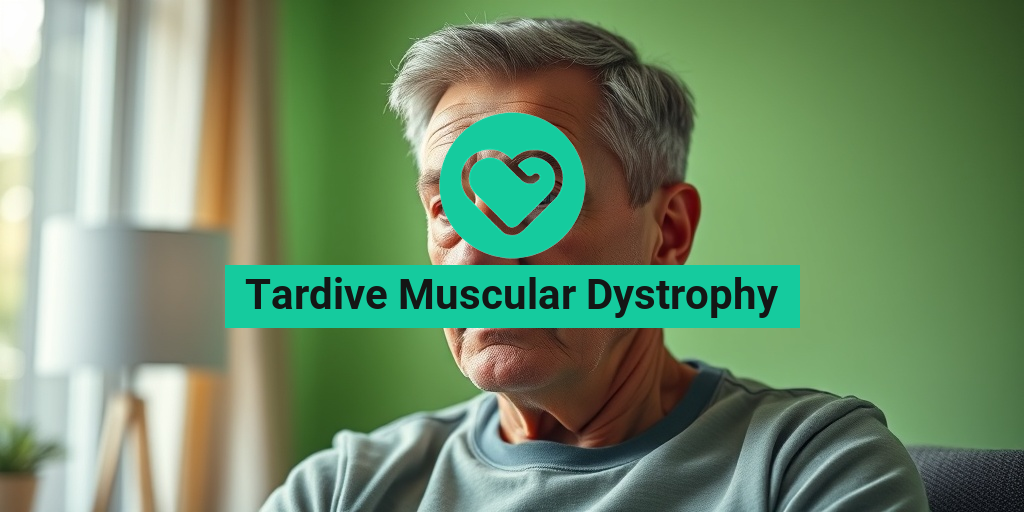“`html
What Is Familial Tremor?
Familial tremor, often referred to as essential tremor, is a neurological condition characterized by involuntary, rhythmic shaking. This condition typically affects the hands, but it can also impact other parts of the body, including the head, voice, and legs. Unlike other types of tremors, familial tremor is usually inherited, meaning it can run in families. Understanding this condition is crucial for those who may be experiencing symptoms or have a family history of tremors.
Understanding the Genetics of Familial Tremor
The genetic basis of familial tremor is a significant area of research. Studies have identified several genes associated with this condition, including the ETM1 gene, which is linked to essential tremor. If you have a family member diagnosed with familial tremor, your risk of developing the condition may increase. Genetic counseling can provide insights into your risk factors and help you understand the implications of familial tremor in your family.
How Familial Tremor Differs from Other Tremors
It’s essential to distinguish familial tremor from other types of tremors, such as those associated with Parkinson’s disease. While both conditions involve shaking, familial tremor is typically more pronounced during movement and can improve with rest. In contrast, Parkinson’s tremors often occur at rest and are accompanied by other symptoms like stiffness and bradykinesia (slowness of movement).
Familial Tremor Symptoms
The symptoms of familial tremor can vary widely among individuals, but they generally include:
- Shaking Hands: The most common symptom, often noticeable when performing tasks such as writing or holding objects.
- Head Tremors: Some individuals may experience shaking of the head, which can be mistaken for a nodding motion.
- Voice Tremors: Changes in voice quality, including a shaky or quavering sound, can occur.
- Leg Tremors: In some cases, tremors can affect the legs, particularly when standing or walking.
When Do Symptoms Typically Appear?
Familial tremor symptoms often begin in early adulthood, but they can also manifest later in life. The severity of symptoms can progress over time, leading to increased difficulty with daily activities. If you notice tremors that worsen or interfere with your quality of life, it’s essential to consult a healthcare professional for evaluation and potential treatment options.
Impact on Daily Life
Living with familial tremor can be challenging. Everyday tasks such as eating, writing, or even holding a cup can become difficult. This can lead to frustration and a decrease in self-esteem. Support groups and therapy can be beneficial for individuals coping with the emotional and psychological impacts of this condition.
Seeking Help and Treatment Options
If you suspect you have familial tremor, it’s crucial to seek medical advice. A healthcare provider can conduct a thorough evaluation, which may include neurological examinations and family history assessments. Treatment options vary and may include:
- Medications: Beta-blockers and anticonvulsants are commonly prescribed to help manage symptoms.
- Physical Therapy: Engaging in physical therapy can improve coordination and strength.
- Surgical Options: In severe cases, procedures such as deep brain stimulation may be considered.
For more information on familial tremor and its management, consider visiting Yesil Health AI, a valuable resource for evidence-based health answers.
In conclusion, familial tremor is a hereditary condition that can significantly impact daily life. Understanding its symptoms and seeking appropriate treatment can help individuals manage their condition effectively. If you or a loved one is experiencing symptoms, don’t hesitate to reach out to a healthcare professional for guidance. Remember, you are not alone in this journey! 🌟
“`

“`html
Familial Tremor Causes
Familial tremor, often referred to as essential tremor, is a neurological condition characterized by involuntary shaking, typically affecting the hands, head, and voice. Understanding the causes of familial tremor is crucial for those experiencing symptoms or seeking a diagnosis. While the exact cause remains unclear, several factors contribute to the development of this condition.
Genetic Factors
One of the primary causes of familial tremor is genetics. Research indicates that familial tremor often runs in families, suggesting a hereditary component. Specific genes have been identified that may play a role in the condition. For instance, mutations in the ETM1 gene have been linked to familial tremor, indicating that genetic predisposition is a significant factor.
Neurological Changes
Familial tremor is associated with changes in the brain, particularly in areas responsible for motor control. These neurological changes can disrupt the normal functioning of the brain’s circuits, leading to the characteristic tremors. While the exact mechanisms are still being studied, it is believed that alterations in neurotransmitter levels, particularly gamma-aminobutyric acid (GABA), may contribute to the tremors.
Environmental Influences
In addition to genetic and neurological factors, environmental influences may also play a role in the onset of familial tremor. Exposure to certain toxins or chemicals, as well as lifestyle factors such as stress and caffeine consumption, can exacerbate symptoms. While these factors may not directly cause familial tremor, they can influence its severity and progression.
Familial Tremor Risk Factors
Understanding the risk factors for familial tremor can help individuals identify their likelihood of developing the condition and seek early intervention if necessary. Here are some key risk factors to consider:
Age
Age is a significant risk factor for familial tremor. The condition typically manifests in individuals over the age of 40, with symptoms often becoming more pronounced as one ages. While it can occur at any age, the likelihood of developing tremors increases with advancing age.
Family History
A family history of tremors is one of the strongest risk factors for developing familial tremor. If a close relative, such as a parent or sibling, has been diagnosed with the condition, your chances of experiencing similar symptoms are heightened. Genetic testing may be an option for those with a strong family history.
Gender
Research suggests that familial tremor may affect men and women differently. While both genders can develop the condition, studies indicate that men may experience more severe symptoms than women. This difference may be attributed to hormonal factors or variations in brain structure and function.
Other Neurological Conditions
Individuals with other neurological conditions, such as Parkinson’s disease, may be at an increased risk of developing familial tremor. Although familial tremor is distinct from Parkinson’s, the presence of one condition can complicate the diagnosis and management of the other. Understanding the differences between familial tremor vs Parkinson’s is essential for accurate diagnosis and treatment.
Stress and Lifestyle Factors
Stressful situations and certain lifestyle choices can exacerbate the symptoms of familial tremor. High levels of anxiety, fatigue, and excessive caffeine intake can lead to increased tremors. Therefore, managing stress through relaxation techniques, regular exercise, and a balanced diet can be beneficial for those affected by familial tremor.
In conclusion, familial tremor is a complex condition influenced by a combination of genetic, neurological, and environmental factors. By understanding the causes and risk factors associated with familial tremor, individuals can take proactive steps towards managing their symptoms and improving their quality of life. If you suspect you may have familial tremor, consider consulting a healthcare professional for a comprehensive evaluation and personalized treatment options. 🌟
“`

“`html
Familial Tremor Diagnosis
Diagnosing familial tremor can be a complex process, as it often requires a thorough evaluation of symptoms, family history, and sometimes advanced testing. This condition, characterized by involuntary shaking, typically affects the hands but can also impact the head, voice, and other parts of the body. Understanding how doctors diagnose this condition is crucial for effective management.
Initial Consultation and Medical History
The first step in diagnosing familial tremor usually involves a detailed consultation with a healthcare provider. During this visit, the doctor will:
- Ask about your symptoms, including when they started and how they have progressed over time.
- Inquire about your family history, as familial tremor is often hereditary.
- Review any other medical conditions you may have that could contribute to tremors.
Physical Examination
A comprehensive physical examination is essential. The doctor will assess:
- The frequency and amplitude of the tremors.
- Whether the tremors occur at rest or during movement.
- Any other neurological signs that may indicate a different condition.
Diagnostic Tests
While there is no single test to definitively diagnose familial tremor, several tests can help rule out other conditions:
- Blood Tests: These can check for metabolic or endocrine disorders that might cause tremors.
- Imaging Studies: MRI or CT scans may be used to examine the brain for structural abnormalities.
- Genetic Testing: If familial tremor is suspected, genetic testing can confirm the presence of specific genes associated with the condition.
Once a diagnosis is made, understanding the nature of familial tremor can help patients and their families prepare for management and treatment options.
Familial Tremor Treatment Options
Managing familial tremor involves a combination of lifestyle changes, medications, and sometimes surgical interventions. The goal is to reduce the severity of the tremors and improve the quality of life for those affected.
Lifestyle Modifications
Making certain lifestyle adjustments can significantly help manage symptoms:
- Stress Management: Stress can exacerbate tremors, so practices like yoga, meditation, and deep-breathing exercises can be beneficial.
- Dietary Changes: A balanced diet rich in antioxidants may help support overall brain health.
- Physical Therapy: Engaging in physical therapy can improve coordination and strength, making daily tasks easier.
Medications
Several medications are commonly prescribed to help manage familial tremor:
- Beta-Blockers: Medications like propranolol can reduce tremor amplitude and frequency.
- Anti-Seizure Medications: Drugs such as primidone may also be effective in controlling tremors.
- Botulinum Toxin Injections: In some cases, injections can help reduce tremors in specific muscle groups.
Surgical Options
For individuals with severe tremors that do not respond to medication, surgical options may be considered:
- Deep Brain Stimulation (DBS): This involves implanting a device that sends electrical impulses to specific brain regions, helping to reduce tremors.
- Thalamotomy: A surgical procedure that involves destroying a small part of the thalamus, which can help alleviate tremors.
It’s essential for patients to work closely with their healthcare providers to determine the best treatment plan tailored to their specific needs. Regular follow-ups and adjustments to the treatment regimen can lead to better management of familial tremor symptoms.
“`

“`html
Familial Tremor Management Strategies
Managing familial tremor can be challenging, but with the right strategies, individuals can lead fulfilling lives. This condition, often hereditary, manifests as involuntary shaking, primarily affecting the hands, head, and voice. Here, we explore various management strategies that can help alleviate symptoms and improve quality of life.
1. Lifestyle Modifications
Making certain lifestyle changes can significantly impact the severity of tremors. Here are some effective modifications:
- Stress Management: Stress can exacerbate tremors. Techniques such as yoga, meditation, and deep-breathing exercises can help reduce stress levels.
- Avoiding Triggers: Identify and avoid substances that may worsen tremors, such as caffeine and certain medications.
- Regular Exercise: Engaging in regular physical activity can improve overall muscle control and coordination. Activities like swimming, walking, or tai chi are particularly beneficial.
2. Occupational Therapy
Occupational therapy can be a game-changer for those with familial tremor. A trained therapist can provide:
- Adaptive Techniques: Learning new ways to perform daily tasks can help minimize the impact of tremors. For example, using weighted utensils can make eating easier.
- Assistive Devices: Tools such as wrist weights or specially designed grips can enhance stability and control.
3. Medications
While there is no cure for familial tremor, certain medications can help manage symptoms. Common options include:
- Beta-Blockers: These medications, often used for heart conditions, can reduce tremor severity in some individuals.
- Anti-Seizure Medications: Drugs like primidone may also be prescribed to help control tremors.
Always consult with a healthcare provider before starting any medication to ensure it is appropriate for your specific situation.
4. Surgical Options
For severe cases where other treatments have failed, surgical interventions may be considered. These include:
- Deep Brain Stimulation (DBS): This procedure involves implanting a device that sends electrical impulses to specific brain areas, helping to reduce tremors.
- Focused Ultrasound: A non-invasive technique that uses ultrasound waves to target and disrupt the tremor-causing areas of the brain.
5. Support Groups and Counseling
Living with familial tremor can be emotionally taxing. Joining support groups can provide a sense of community and understanding. Additionally, counseling can help individuals cope with the psychological aspects of the condition.
Familial Tremor Outlook and Prognosis
The prognosis for individuals with familial tremor varies widely. While the condition is generally not life-threatening, it can significantly impact daily activities and quality of life. Understanding the outlook can help individuals and families prepare for the future.
1. Progression of Symptoms
Familial tremor typically progresses slowly. Many individuals experience mild symptoms that may not interfere with daily life. However, in some cases, tremors can worsen over time, leading to increased difficulty with tasks such as writing or eating. Regular monitoring by a healthcare professional is essential to track changes in symptoms.
2. Impact on Daily Life
The degree to which familial tremor affects daily life varies. Some individuals may find that their symptoms are manageable with lifestyle changes and therapy, while others may require more intensive interventions. The key is to remain proactive in managing the condition.
3. Genetic Considerations
Familial tremor is often inherited, and understanding the genetic factors can provide insight into the condition. Genetic counseling may be beneficial for families with a history of tremors, as it can help assess risks and inform family planning decisions.
4. Research and Future Directions
Ongoing research into familial tremor is promising. Advances in genetics and neurology may lead to new treatment options and a better understanding of the condition. Staying informed about the latest developments can empower individuals to make informed decisions about their health.
In conclusion, while familial tremor presents challenges, effective management strategies and a positive outlook can significantly enhance quality of life. With the right support and resources, individuals can navigate their journey with confidence. 🌟
“`

“`html
Frequently Asked Questions about Tremor, Familial
What is Tremor, Familial?
Tremor, Familial refers to a hereditary condition characterized by involuntary shaking or trembling, often affecting the hands, arms, or head. It is typically more noticeable during movement and can vary in severity among individuals.
What are the common causes of Familial Tremor?
The primary cause of familial tremor is genetic inheritance. Specific genes have been identified that may contribute to the development of this condition. Environmental factors may also play a role, but the exact mechanisms are still being researched.
How is Tremor, Familial diagnosed?
Diagnosis usually involves a thorough medical history, physical examination, and possibly genetic testing. Doctors may also use imaging studies to rule out other conditions that could cause tremors.
What are the treatment options for familial tremor?
While there is no cure for familial tremor, various treatment options can help manage symptoms. These may include:
- Medications such as beta-blockers or anticonvulsants
- Physical therapy to improve coordination and strength
- Occupational therapy to assist with daily activities
- Surgical options like deep brain stimulation for severe cases
How does familial tremor compare to Parkinson’s disease?
While both conditions involve tremors, familial tremor is primarily characterized by action tremors, which occur during movement, whereas Parkinson’s disease typically presents with resting tremors. Additionally, Parkinson’s may involve other symptoms such as stiffness and bradykinesia (slowness of movement).
Can familial tremor get worse over time?
Yes, familial tremor can progress in some individuals, leading to increased severity of symptoms. Regular monitoring by a healthcare professional is essential to manage the condition effectively.
What is the ICD-10 code for familial tremor?
The ICD-10 code for familial tremor is G25.0. This code is used for medical billing and documentation purposes.
Is there a genetic component to familial tremor?
Yes, familial tremor has a genetic basis, and specific genes have been linked to its occurrence. Genetic counseling may be beneficial for individuals with a family history of the condition.
Where can I find more information about familial tremor?
For more information, consider visiting reputable health websites, consulting with healthcare professionals, or joining support groups focused on movement disorders.
“`




